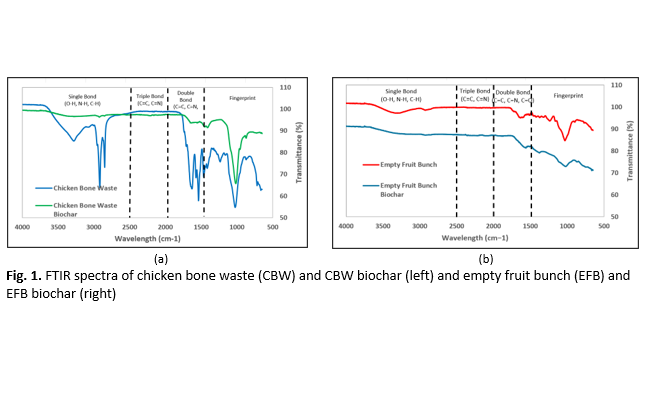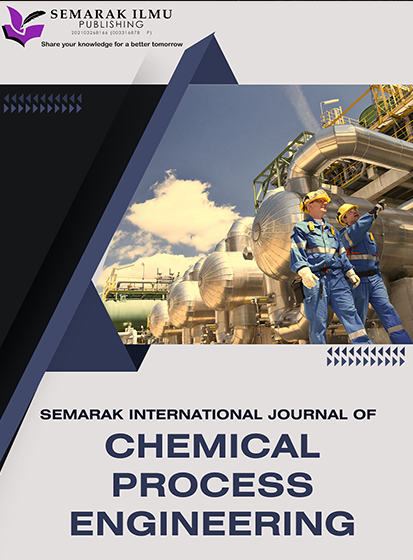Evaluation of Biochar Production From Waste Sources for Syngas Production
DOI:
https://doi.org/10.37934/sijcpe.1.1.2230Keywords:
Biochar, syngas production, CO2 gasification, chicken bone waste, empty fruit bunchAbstract
This research examines the viability of producing syngas by CO₂ gasification of biochar obtained from chicken bone waste (CBW) and empty fruit bunch (EFB), two prevalent waste materials in Malaysia. Agricultural and poultry waste provides significant national environmental concerns, underscoring the pressing need for sustainable energy solutions and effective waste management measures. This study aims to analyse the chemical properties of biochar derived from CBW and EFB and evaluate their potential for syngas generation. Biochar was produced by pyrolysis and subsequent gasification, with the resultant gases analysed using Fourier Transform Infrared Spectroscopy (FTIR) and Thermogravimetric Analysis coupled with Mass Spectrometry (TGA-MS). The FTIR study indicated a decrease in hydroxyl and aliphatic groups in both biochar types of post-pyrolysis, implying an enhancement in carbon content and structural simplicity. Thermogravimetric Analysis (TGA) research revealed that CBW biochar had more weight loss than EFB biochar during gasification, indicating superior thermal breakdown characteristics and enhanced reactivity. Mass spectrometry (MS) investigation of CO₂ gasification products from chicken bone waste (CBW) and empty fruit bunch (EFB) biochar revealed that both biochar produces essential syngas constituents—hydrogen (H₂), carbon monoxide (CO), carbon dioxide (CO₂), and methane (CH₄). EFB biochar generated elevated hydrogen concentrations, exhibiting ion currents of 7.85 × 10⁻⁹ A at m/e = 2 and 1.14 × 10⁻¹⁰ A at m/e = 4, in contrast to CBW biochar, which displayed 6.00 × 10⁻⁹ A and 7.21 × 10⁻¹¹ A. Both biochar emitted considerable quantities of CO and CO₂, with EFB biochar exhibiting somewhat elevated levels for both gases. Furthermore, EFB biochar exhibited a higher methane emission. This data indicates that CBW biochar is more appropriate for long-term gasification, whereas EFB biochar is more effective for rapid gas production. The results of this study suggest that biochar produced from chicken bone waste and empty fruit clusters could be a viable feedstock for syngas generation, providing a sustainable alternative to renewable energy production. Future research should concentrate on augmenting the catalytic characteristics of biochar and investigating its incorporation into renewable energy systems to enhance sustainability and waste management techniques.
Downloads









